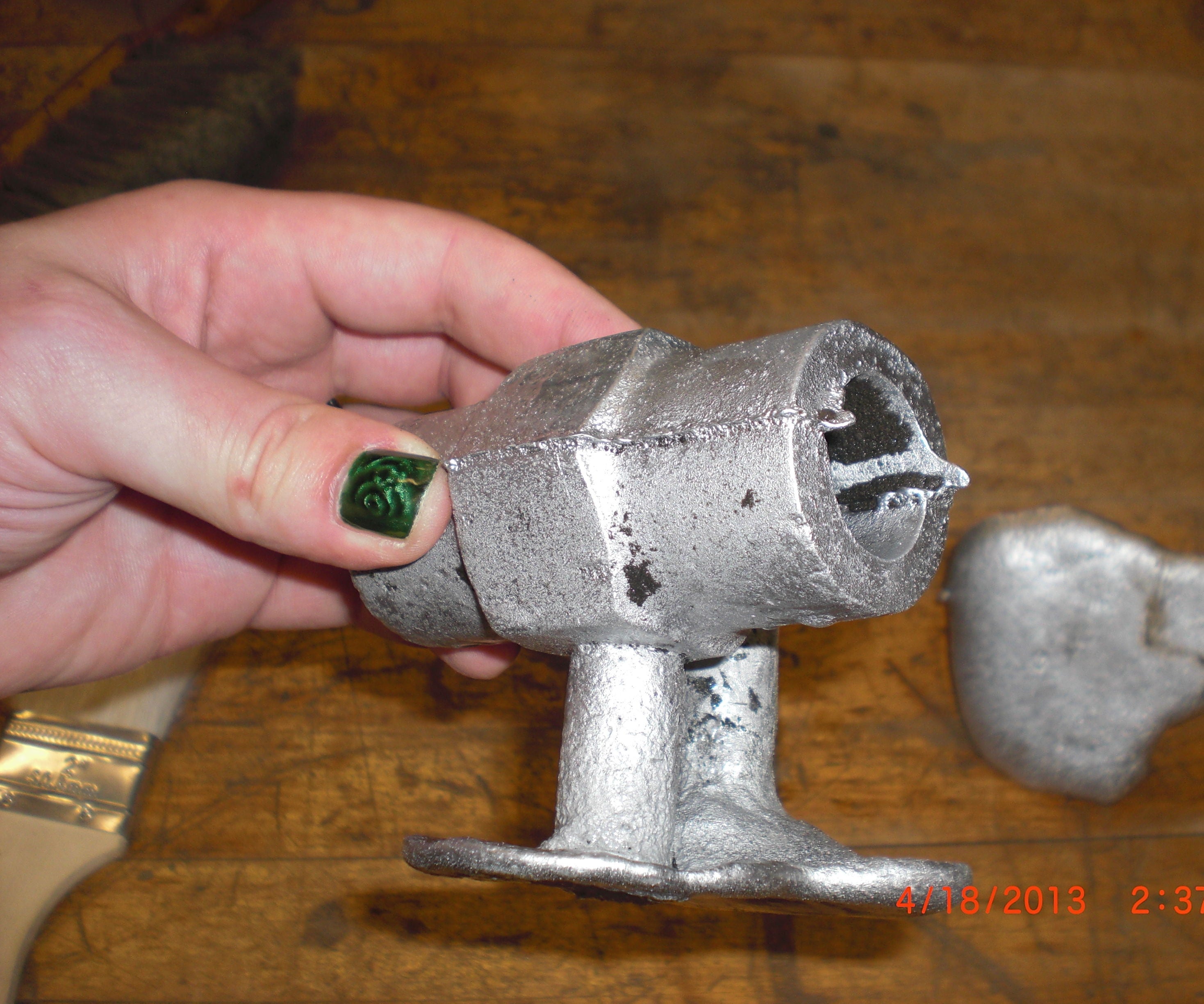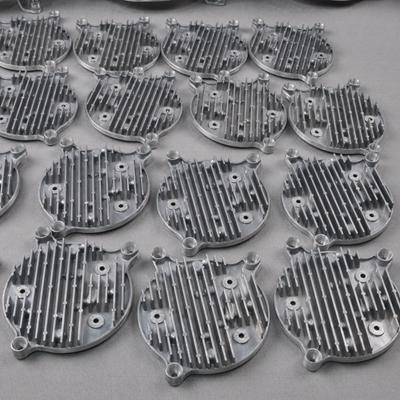A Comprehensive Guide to Aluminum Casting: Strategies, Makes Use Of, and Industry Insights
Aluminum casting is an important process with diverse applications across multiple markets. This guide takes a look at different casting techniques, consisting of sand, die, and investment casting. Each method has distinctive benefits, adding to aluminum's track record for corrosion-resistant and lightweight elements. Recognizing these strategies is necessary for makers aiming to utilize aluminum's buildings. The landscape is swiftly developing. The influence of current fads on future practices warrants additionally expedition.
Comprehending Aluminum: Residences and Advantages
Aluminum, a functional steel, is extensively identified for its distinct homes that make it a perfect option for different applications. It is lightweight yet solid, supplying an exceptional strength-to-weight ratio that is especially helpful in sectors such as aerospace and auto. In addition, aluminum shows phenomenal corrosion resistance due to the formation of a protective oxide layer, which enhances its sturdiness and durability.
The metal is additionally very malleable, permitting very easy shaping and manufacture, which adds to its widespread usage in production. Aluminum is an outstanding conductor of electrical energy and warmth, making it valuable in electric and thermal applications. Its recyclability includes in its allure, promoting sustainability in making procedures. The combination of these residential or commercial properties not only improves performance but also lowers energy intake throughout its lifecycle, placing aluminum as a vital product in modern-day engineering and style.
Summary of Aluminum Casting Techniques

Sand Casting Approaches
Amongst different aluminum casting methods, sand casting attracts attention as one of the most extensively made use of methods because of its flexibility and cost-effectiveness. This method includes creating a mold and mildew from sand, which can be quickly formed to develop complex geometries. The procedure starts with packing sand around a pattern, normally made of steel or plastic, to develop a cavity that defines the final form. When the mold and mildew is ready, liquified aluminum is put right into the dental caries, enabling it to solidify and cool. Later, the sand is removed, disclosing the actors component. Sand casting is specifically preferred for producing large elements and tiny manufacturing runs, making it an essential approach in various sectors, including automotive and aerospace. Its flexibility to different designs boosts its allure.
Die Casting Processes
Die casting procedures represent a very efficient approach for generating elaborate aluminum get rid of superb dimensional precision and surface finish. This technique includes requiring liquified aluminum into a mold and mildew under high stress, guaranteeing that even one of the most complicated geometries can be accomplished. There are 2 key kinds of die casting: warm chamber and cold chamber. Hot chamber die casting appropriates for steels with reduced melting points, while chilly chamber pass away casting is liked for aluminum because of its greater melting factor. Both methods assist in fast production and can suit high quantities, making them optimal for markets such as automotive and electronic devices. Efficient die casting calls for precise temperature level control and careful mold style to ensure and prevent flaws quality.
Sand Casting: A Standard Technique
Although modern casting techniques have arised, sand casting stays a foundational technique in the aluminum sector due to its convenience and cost-effectiveness. This standard strategy includes producing a mold from a mixture of sand and a binding representative, permitting the production of intricate forms and dimensions. Sand casting is especially advantageous for low to tool manufacturing quantities, as it decreases setup expenses and time.
The procedure begins with the creation of a pattern, which is after that put in the sand to develop a dental caries. When the mold is ready, liquified aluminum is poured in, filling the cavity and taking the form of the pattern. After cooling, the sand is eliminated, revealing the finished cast part.
Sand casting is extensively used for creating auto parts, machinery parts, and imaginative sculptures, highlighting its enduring relevance in different fields of the aluminum market. (Aluminum Casting Company)
Die Casting: Precision and Performance
Die casting is a procedure that provides amazing accuracy and efficiency in aluminum manufacturing. This technique is widely utilized throughout various markets because of its ability to generate complicated forms with limited tolerances. It additionally provides distinct obstacles that need innovative solutions to ensure ideal results.
Process Review and Benefits
When considering aluminum casting approaches, pass away casting stands apart for its accuracy and effectiveness. This procedure includes compeling liquified aluminum into a mold under high pressure, top article which enables for complex styles and limited resistances. The quick cooling of the steel assurances fast solidification, causing high-quality parts with marginal surface area imperfections. Furthermore, die casting offers outstanding repeatability, making it appropriate for big production runs. Using multiple-use mold and mildews substantially decreases product waste and manufacturing time, adding to cost-effectiveness. Moreover, the stamina and resilience of die-cast aluminum elements make them positive for requiring applications. Generally, pass away casting combines advanced technology with sensible benefits, placing it as a leading option in aluminum casting methods.
Applications in Various Industries
The adaptability my site of die casting allows its application across a vast array of industries, showcasing its precision and performance. In the vehicle market, die casting generates detailed parts such as engine blocks and transmission real estates, adding to weight reduction and enhanced performance. The electronic devices market benefits from die casting by developing sturdy and light-weight real estates for various tools, enhancing both functionality and appearances. In the aerospace field, this method gives high-strength parts that withstand severe problems while maintaining low weight. In addition, durable goods makers use pass away casting for producing elements that require tight resistances and intricate geometries. Generally, die casting plays a crucial duty ahead of time innovation and item layout throughout numerous industries, highlighting its relevance in contemporary manufacturing.
Difficulties and Solutions
Countless challenges arise in the die casting process that can impact both accuracy and effectiveness. One considerable problem is the incident of defects such as porosity, which can compromise the integrity of the end product. In addition, keeping specific temperature control is important, as variants can bring about inconsistent product properties. Tool deterioration likewise existing challenges, usually resulting in raised production costs and downtime. To minimize these issues, manufacturers use sophisticated simulation software application to predict possible issues before manufacturing starts. Carrying out regular upkeep schedules for equipment and devices likewise helps keep performance. Spending in top notch products and utilizing skilled service technicians can improve total procedure reliability, making certain that high criteria of accuracy are constantly satisfied.
Investment Casting: Information and Intricacy
Although investment casting is typically Continued related to high precision and elaborate designs, its true toughness depends on the capability to create complex geometries that would be challenging to accomplish via various other producing processes. This strategy uses a wax pattern, which is coated with a refractory material to develop a mold and mildew. Once the mold is created, the wax is disappeared, leaving a dental caries that completely replicates the original pattern.

Applications of Aluminum Castings Across Industries
Investment casting's ability for producing elaborate aluminum components has actually made it a valuable method across various markets. In the automotive industry, aluminum castings are made use of for engine blocks, transmission housings, and suspension components, adding to weight decrease and improved gas performance. The aerospace sector advantages from aluminum castings in airplane structures, generator housings, and landing gear, where strength-to-weight proportion is vital. aluminum casting. Furthermore, the electronic devices field uses aluminum castings for heat sinks and enclosures, making certain efficient thermal monitoring and longevity. In the building sector, aluminum spreadings are used for architectural aspects, home window structures, and structural components, providing corrosion resistance and aesthetic charm. Additionally, the aquatic field integrates aluminum spreadings in watercraft engines and installations due to their lightweight and resistance to seawater rust. Generally, aluminum castings show versatility and functionality, making them crucial in diverse applications throughout numerous fields
Current Fads and Future Instructions in Aluminum Casting
Current developments in aluminum casting innovation are shaping the future of manufacturing throughout different markets. One remarkable fad is the enhancing adoption of additive production strategies, which allow for more facility geometries and decreased material waste. Furthermore, the combination of automation and robotics improves manufacturing procedures, enhancing performance and precision.
Sustainability is also a driving force, with manufacturers concentrating on reusing aluminum and reducing power usage throughout the casting process. This change not only decreases ecological influence yet also reduces operational expenses.
Furthermore, advancements in simulation software application make it possible for much better design and optimization of casting procedures, causing higher high quality products with fewer flaws. As markets remain to accept these technologies, the demand for light-weight and high-performance aluminum elements is anticipated to climb, further strengthening aluminum casting's role in the future of production. Overall, these trends highlight a commitment to efficiency, sustainability, and technological development in the aluminum casting sector.
Regularly Asked Concerns
What Are the Environmental Impacts of Aluminum Casting Processes?

Exactly How Does Aluminum Casting Contrast to Other Products?
Aluminum casting offers lightweight, corrosion-resistant properties, making it beneficial compared to much heavier steels like steel. Its thermal conductivity and ease of forming additionally boost its appeal, while specific plastics provide adaptability doing not have in traditional aluminum applications.
What Security Steps Should Be Taken Throughout Aluminum Casting?
During aluminum casting, important precaution include wearing safety gear, guaranteeing appropriate ventilation, using fireproof products, maintaining equipment regularly, and adhering to security methods to stop accidents and direct exposure to harmful fumes and liquified steel.
Exactly How Can I Choose the Right Aluminum Alloy for Casting?
Selecting the ideal aluminum alloy for casting entails evaluating mechanical residential or commercial properties, deterioration resistance, and desired application. Consider aspects like temperature level resistance and weldability to assure the chosen alloy satisfies specific performance and durability needs.
What Are the Typical Flaws in Aluminum Castings and Their Solutions?
Usual flaws in aluminum spreadings consist of porosity, surface area, and shrinking flaws. Solutions include improving mold design, controlling cooling prices, and making sure proper alloy selection, together with applying extensive assessment techniques to determine and fix these issues successfully.
Among the most frequently made use of techniques are sand casting and pass away casting, each offering distinct benefits and applications. Among various aluminum casting strategies, sand casting stands out as one of the most widely used techniques due to its convenience and cost-effectiveness. Warm chamber pass away casting is suitable for steels with reduced melting factors, while cool chamber die casting is liked for aluminum due to its higher melting factor. Modern casting strategies have emerged, sand casting stays a foundational approach in the aluminum sector due to its flexibility and cost-effectiveness. When taking into consideration aluminum casting techniques, die casting stands out for its accuracy and performance.